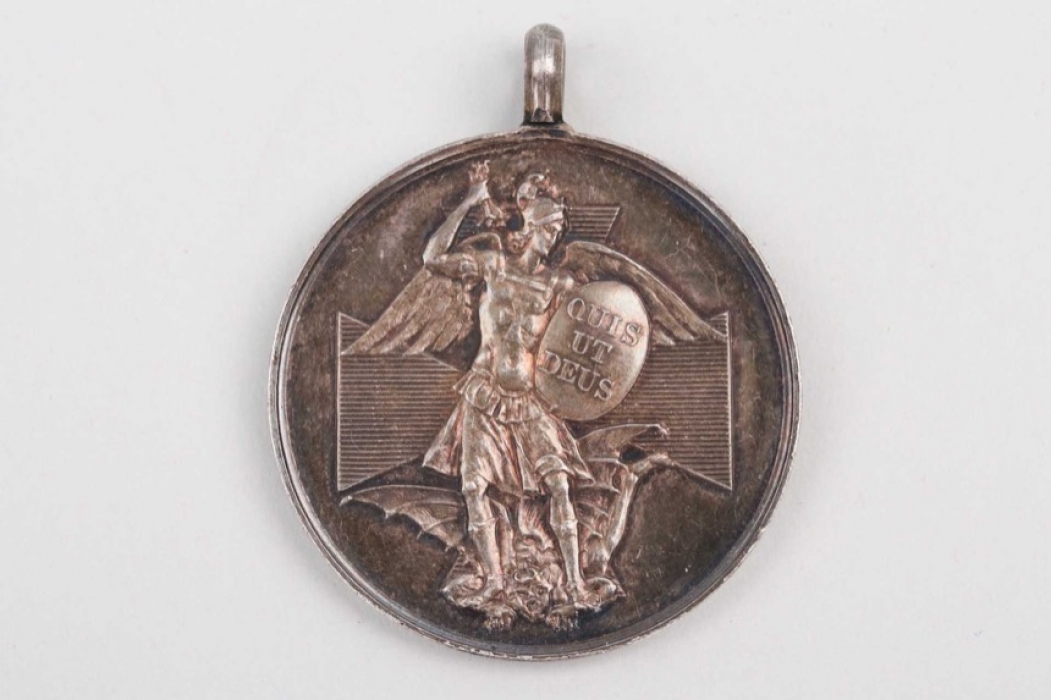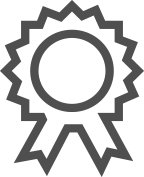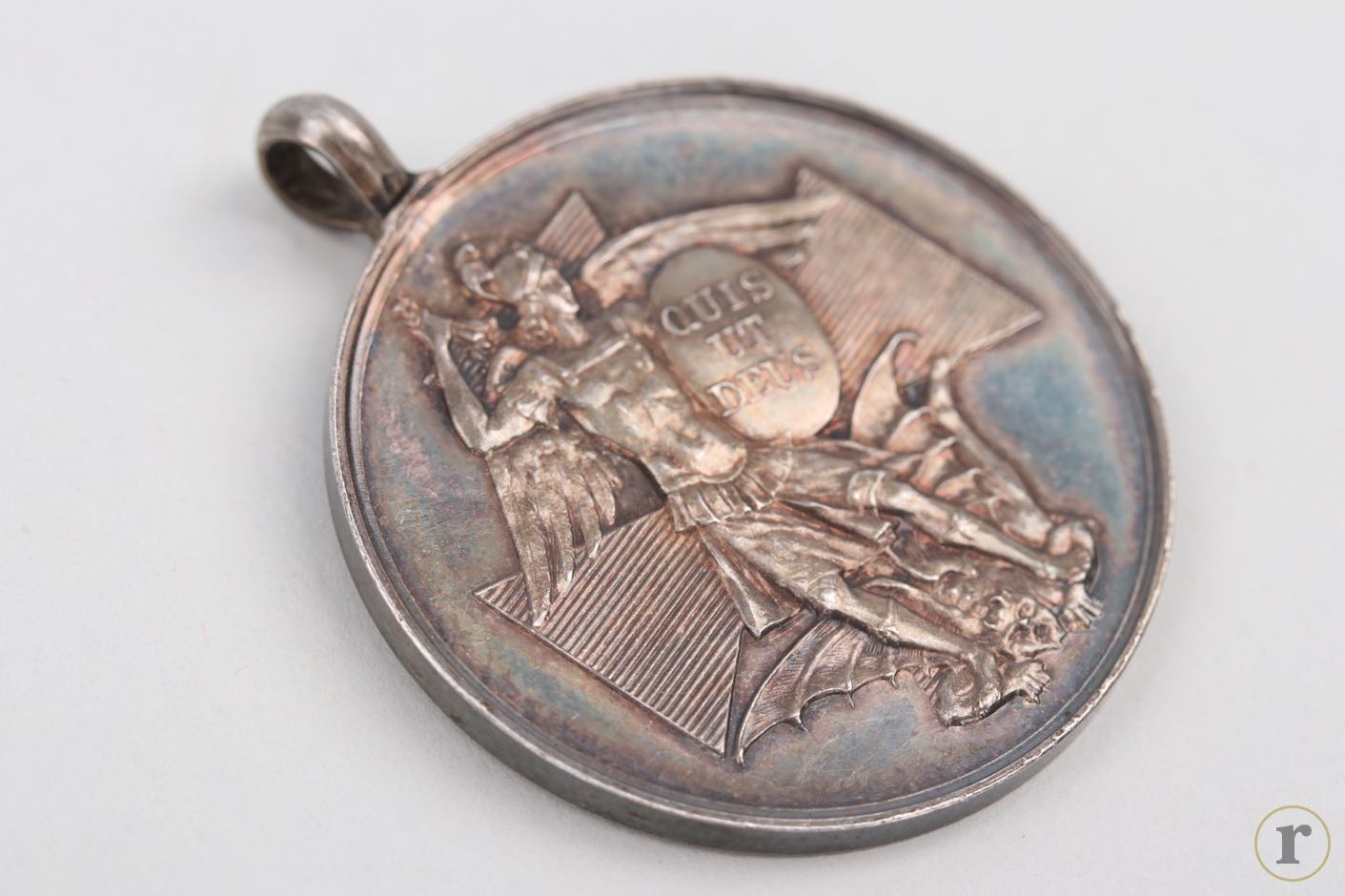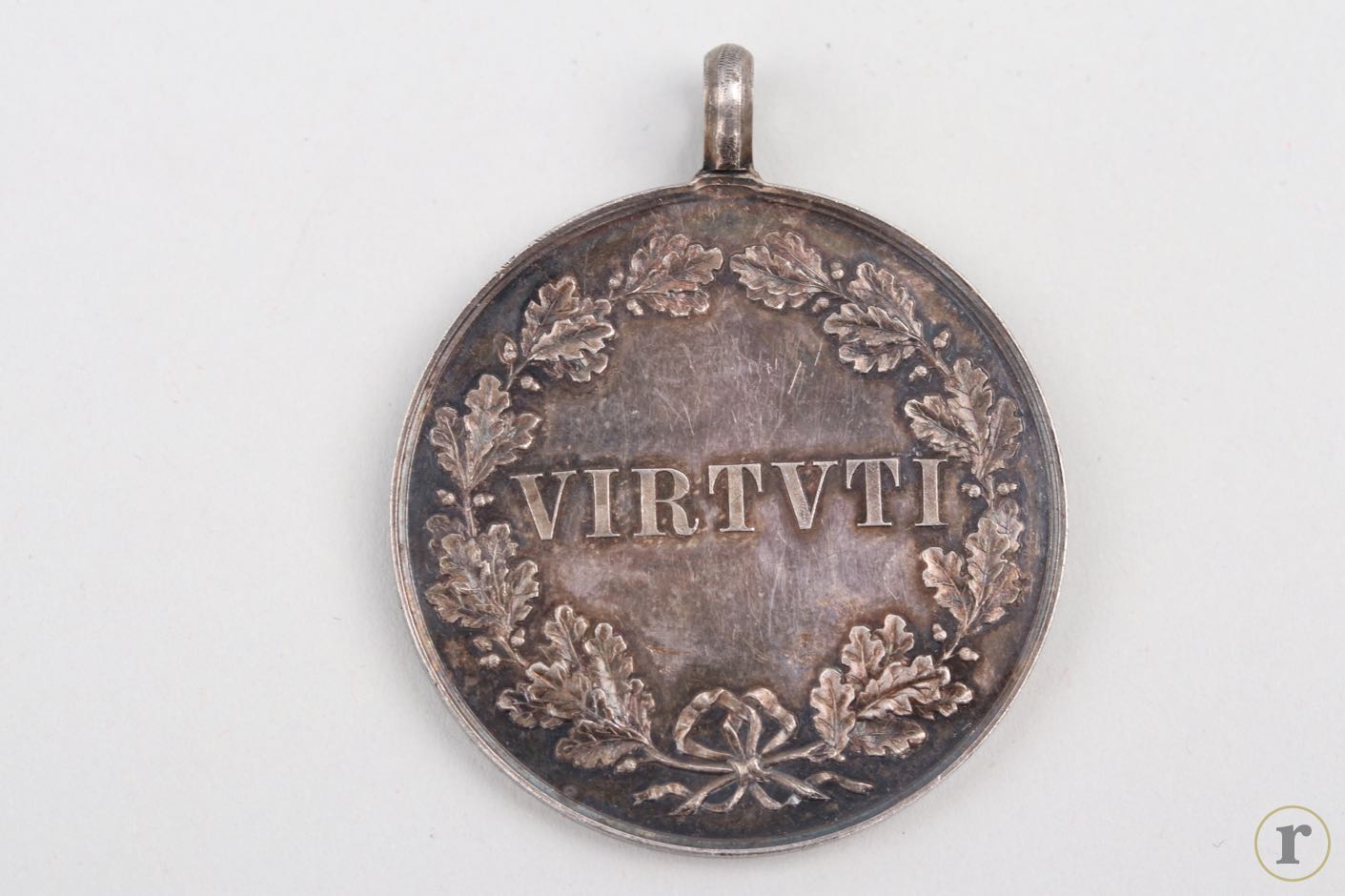NEW UPDATE - SEPTEMBER 2021
Buy treasures for a reduced Buyer‘s Premium

Bavaria - Order of St. Michael Silver Medal
Own a similar product you want to sell? We are here for you at +49 8541 9053699
-
MEDALNET APPRAISAL SERVICES
-
MEDALNET APPRAISAL SERVICES
MEDALNETSERVICES.COMThis item was examined and validated in cooperation with MEDALNET APPRAISAL SERVICES. Our team’s knowledge base received the most competent boost for orders and decorations for imperial orders and decorations with the help of Bernd Kruse and Andreas M. Schulze Ising. Andreas and Bernd are held in high regard with collectors around the world. With more than 50 years of experience in the field of order decorations and medals, they are seen as competent and independent experts.
GUARANTEEAs usual, we offer a full right of return for originality within the withdrawal period for items that are offered in cooperation with MEDALNET APPRAISAL SERVICES.
MEDALNET APPRAISAL SERVICES
-
-
PAYMENT
-
HOW CAN I PAY FOR MY ORDER?
AUCTIONSYou will receive an e-mail confirming your successful bids the day after the auction has ended. In your personal my ratisbon's you will be able to inform us about your most convenient payment method for this order or tell us about an alternative shipping address.
If we don’t hear from you within 24 hours, we will send an invoice choosing the payment and shipping options which we think are the most comfortable ones to you. If you decide to change your shipping or payment method after receiving your invoice, just drop us a line or visit my ratisbon's/ORDERS for any more details.
SHOP ORDERSChoose your payment method when ordering and submit your order. Once your order has been received we will send an invoice including your shipping costs and your payment instructions.
After receiving the invoice, the order must be paid within 7 days.
Please contact us to discuss layaway options.To learn more about paying at ratisbon's, please see your FAQ pages.
WE ACCEPT FOLLOWING PAYMENT METHODS
-
-
Versand
-
HOW DO YOU SHIP MY NEW TREASURES?
PACKING & TRACKINGWe usually send out orders within 1-3 working days after your payment has been received. In most cases, we are faster than this! We will inform you when your goods are being dispatched and provide a tracking number, In addition, you can always check your order status at my ratisbon's/ORDERS. Delivery times will vary depending upon the delivery destination and type of shipping service you have chosen.
SHIPPING TO ALTERNATIVE ADDRESSIf you prefer to have your order shipped to your work address or a friend during your absence, we will happy to arrange this for you. Send us an email letting us know about your new shipping address and we will be happy to send an updated invoice to you.
OUR LOGISTIC PARTNERS ARE AS FOLLOWS
-
-
OUR GUARANTEE
-
 OUR GUARANTEE!
OUR GUARANTEE!We only offer collectables which to the best of our specialists knowledge are authentic. About 15% of all consignments are returned to the consignor after extensive research due to authenticity issues.
Unlike traditional auction houses we do offer a full right of return. If you are not satisfied with what you won or bought, you may return it within 14 days. Please inform us and we will instruct you on how to return the goods. For more information, please visit FAQ pages.
Important note: Cancelling bids after an auction may disappoint the consignor, who like you is a collector. This situation is easy to avoid. We encourage you not to bid on any collectable if you are unsure if it fits into your collection. Ask us to cancel your bid 24 hours prior to the end of an auction to avoid this situation.
-
COUNTRY Imperial Germany
DIMENSIONS 36 mm
WEIGHT 19.5 g
EAN 2000000583693
PERIOD until 1918
COUNTRY Imperial Germany
MATERIAL
DIMENSIONS 36 mm
MAKER
WEIGHT 19.5 g
COUNTRY Imperial Germany
LOT 57-1450
DIMENSIONS 36 mm
EAN 2000000583693
MAKER
WEIGHT 19.5 g
Bavaria - Order of St. Michael Silver Medal
Description
Silver medal.
As for other medals, there are variation in their coinage. The tools necessary to coin these medals were used under extremely high loads and would break over time. The medals of the St. Michael Order know a few of those variations. The initial tool showed the designers mark "A.Börsch" in about 5 mm length. With the creation of the lower grade bronze medal a new avers tools was created now showing the designer's mark in 7 mm length. Both avers tools were used in conjunction with the same reverse tool, so called "thin oak leaf". At some point a new reverse tool was made with a denser oak leaf pattern. There are at least 8 different types and avers/reverse variations known.
Silver medal.
As for other medals, there are variation in their coinage. The tools necessary to coin these medals were used under extremely high loads and would break over time. The medals of the St. Michael Order know a few of those variations. The initial tool showed the designers mark "A.Börsch" in about 5 mm length. With the creation of the lower grade bronze medal a new avers tools was created now showing the designer's mark in 7 mm length. Both avers tools were used in conjunction with the same reverse tool, so called "thin oak leaf". At some point a new reverse tool was made with a denser oak leaf pattern. There are at least 8 different types and avers/reverse variations known.
Genuinely nice and fresh example. Ring missing.
Condition
1-
The House Order of St. Michael was founded by King Ludwig I. in three classes on January 18, 1837 based on the former House Order of St. Michael, ceasing its existence at the same time.
The new order could be awarded to Bavarians and foreigners alike no matter of religious belief or social standing. The order's motto was:”PRINCIPI FIDELIS FAVERE PATRIAE” (Be true to the Prince and meritorious to the fatherland).
The Bavarian membership of the order was limited to 24 grand crosses, 40 Commander and 300 knight crosses; there was no limit for foreigners. The limit was raised on August 25, 1846 to 36 grand crosses, 60 Commander and 320 knight crosses.
The order went through several changes during its existence. Grand crosses would wear the star on their right chest from 1844 on, yet the sash from the left shoulder to the right side of the body. In 1855 the Grand Commander Class was added, the knight cross was split in a knight cross 1st and 2nd class. Merit Cross and Merit Medal were added to the order in 1887 while redesigning the order and making it a true four class order (First, Second, Third and Fourth Class). A bronze merit medal was added in 1894. The honor cross was added in between knight 1st class and commander cross in 1910, as well as a 4th class without crown and the merit cross with crown.
The cross was a gold framed blue enameled patty cross showing the letters PFFP (PRINCIPI FIDELIS FAVERE PATRIA) on its arms. Around the medallion a wreath of golden lightning bolts is placed within and on the cross arms. The avers medallion consists of a golden oval plate showing the golden patron Michael in knight armor standing over the dragon upholding lightning bolts. He holds in his left hand a shield with the blue enameled inscription:”QUIS UT DEUS” (Who is like god). The reverse is of identical design, yet the plain round golden center medallion shows the inscription:”VIRTUTI”. The Cross is suspended from a golden Bavarian crown. The star is an eight pointed one with a patty cross in gold showing the silver letters PFFP in its arms. The blue enameled center shows the gold inscription:”QUIS UT DEUS” and is framed by a diamond cut silver frame just like the cross arms.
The design for decorations after 1887 does not show the letters and lightning bolts for the classes 2 to 4. Only the 1st class retained the original design.



